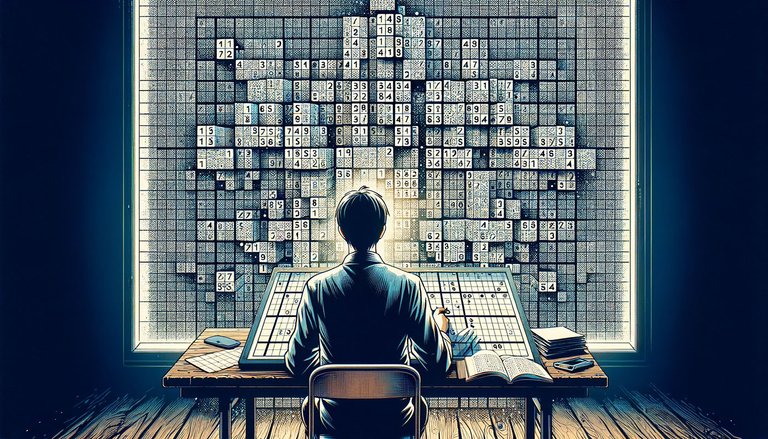Do You Sudoku?

I'm going to guess most of you have heard of Sudoku. It's become enormously popular over the past two dozen years it has gone from an unknown numbers game to probably the second-most popular puzzle game, right behind crossword puzzles. It's one of those easy-to-learn/hard-to-master type games that keeps people coming back to it.
Despite the name, it's not actually a Japanese game. An early version of the game first appeared in French newspapers around 1895. The modern version of the game was introduced by Howard Garns, a retired architect in Indiana, in 1979 using the name Number Place. It's unclear if Garns was familiar with the similar French puzzle. About a half decade later, it was introduced into Japan by Maki Kaji using simplified rules and making the puzzle symmetrical. Then 13 years later, it spread to Hong Kong, and that is when it started to explode world wide. There are all kinds of variants at this point, but the base game remains the most popular form.
There are a number of mathematical properties that have emerge about the game. Mathematicians have proven that the fewest possible clues are 17. In some variants there are fewer, but we are talking about the base game with the default rules. That's the number of all possible puzzles using only 17 clues, mind you, if we add more clues the number of possible puzzles goes up high enough that it's safe to say we have plenty of puzzles to go around.

Anyway, what prompted me to write this post was a Numberphile video I happened to see. Numberphile makes math videos if you are unfamiliar with them, usually talking to university mathematicians about curious proofs and things like that. Pretty nerdy stuff. This Numberphile video was different in that it features Simon Anthony, a dude who makes his living from Sudoku (crazy, isn't it?), who introduces us to a really unique property of Sudoku called the Phistomephel Ring. This is really cool! Watch and learn.
❦
 |
David LaSpina is an American photographer and translator lost in Japan, trying to capture the beauty of this country one photo at a time and searching for the perfect haiku. He blogs here and at laspina.org. Write him on Twitter or Mastodon. |
I totally would have guessed it was Asian!
I thought the same until I read into the history.
That’s interesting. Never would have thought it wasn’t Japanese.
The name fools us. I didn't realize it either until I started to read the history of the game.
Wow, that's some amazing math-ing there. It's funny, even though I am terrible at math (and therefore dislike it very much), I've always loved sudoku. But that's because it's a logic puzzle, rather than a math puzzle. It could just as easily use letters or other symbols in place of the numbers, and the results wouldn't change. Ergo it sneaks in below my math-despising radar. 😆
My favorite type is jigsaw sudoku, though, which given the irregular shapes of the blocks of 9, I don't imagine this technique would work for. Still, something to keep in mind the next time I'm working a regular sudoku and start feeling stumped.
Thank you for sharing!
!PIMP
!PIZZA
You must be killin' it out here!
@willendorfia just slapped you with 1.000 PIMP, @dbooster.
You earned 1.000 PIMP for the strong hand.
They're getting a workout and slapped 1/2 possible people today.
Read about some PIMP Shit or Look for the PIMP District
I'm sure there are other math properties that could help you with the jigsaw variant. But yeah, I totally get the wanting to ignore the math, and just focusing on the logic part of it.
$PIZZA slices delivered:
@willendorfia(2/10) tipped @dbooster
I've never played it, but interesting. I'm going to have to give a shot one of these days. Some we have the French to blame for Sudoku? lol
Another thing to blame them for!
I don't know if I would call it fun, but there is some satisfaction to solving a puzzle, the same as a crossword.
I've heard the name Sudoku for years, but I have never tried it.
I bet I'm in the minority.
I think most newspapers carry it these days right next to the crossword, so if you want to give it a try look there.